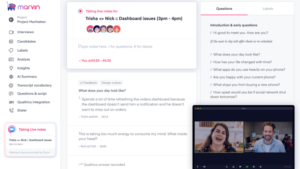‘Fluency’ can be defined as the property of a person or a system that delivers information quickly and with expertise. In education, fluency is often referred to as the bridge between words and comprehension.
In the world of data, fluency helps one to move away from just the data or numbers to attaining a deeper understanding about them, drawing inferences, and gaining insights about how the data can be deployed in an impactful manner.
According to the World Economic Forum, at the start of 2020, the total amount of data in the world was estimated to be 44 zetabytes. With huge volumes of data now being available in every aspect of life, data producers and consumers often struggle to understand each other.
How can the data be made sense of? How can organisations use such a huge resource to their advantage? What disruptive innovations are possible? These questions can be addressed only if the users of this data exhibit fluency. After emphasising data literacy in organisations, the new mantra is Data Fluency.
Let’s take a look at what data fluency really means.
Data literacy vs data fluency
Simply put, data literacy is the capability to source, analyse, and understand data and extract meaning out of it. This is akin to giving a student a comprehension passage and seeking answers for the questions based on the passage.
However, if the same student were to write a philosophical essay based on the comprehension passage, it would require advanced skills such as creative writing and the ability to think deeply, which would require language fluency.
This is similar to data fluency, which goes beyond data literacy and requires advanced skills that exceed simply deriving conclusions from data into the realm of innovation and ideation.
Data analytics has now become a familiar word and its tools have become popular. Drawing insights from data has, therefore, become much easier.
The challenge is to foster a culture where these insights are constantly generated and deployed by organisations effectively to help drive challenging goals.
Need for data fluency
Since the advent of data analytics, organisations have been striving to collect volumes of data and finding the means to store them. However, in many of these organisations, the bulk of the data collected remains disconnected from those employees who can make use of it.
This could be either due to the inaccessibility of the data or the lack of skills to understand it. Thus, these organisations need to build a data fluent culture, where data is valued as a shared asset and can be used to tell stories and build analyses.
Advantages of a data fluent culture
- Just the way fluency in language fosters communication, data fluency enables collaborators to converse in a common data language.
- An organisation that is data fluent can determine a set of standards, processes, tools, and conditions that are acceptable to all.
- Data fluency enables better sharing of data that enhances both the speed and quality of decision-making.
- The collective intelligence derived from analysis enables organisations to think ahead, plan, and even monetise the value of the data.
Risks of not fostering a data fluent culture
- Automation is one of the current megatrends. Teams that are not data fluent may not be able to identify processes that can be automated, resulting in a loss of automation opportunities.
- Innovative ideas usually involve complexities that require applying data skills. Without a data fluent culture, innovation capabilities may be inadequate.
- Lack of a data fluent culture may dampen employee engagement and growth. If only leaders and data scientists have access to data, it creates silos within the organisation. A part of the organisation makes decisions backed by data, while the other cites experience and instinct to push its ideas, resulting in division and conflicts.
Building a data fluent culture
A data fluent culture consists of four intertwined elements. These are:
Employees who are data fluent and comfortably speak the language of data
Organisations that wish to be data fluent should hire employees with data skills even as they train others already in the organisation to become data literate and, eventually, fluent. Leaders with a strong inclination toward analytics-based strategies should be encouraged.
Specialist teams that are skilled in churning out data products
The personnel would be data scientists hired specifically to produce data-informed products. Some key skills that these employees need are—the ability to break down and identify the elements of complicated scenarios in businesses, the technical skills to mine and process data, the ability to analyse and derive value from the data, and lastly, ably communicate and succinctly put forth their findings and analysis.
A conducive environment that enables discussions on data
Only a democratic organisational structure can enable a data fluent culture. Organisations should encourage ideas that are backed by solid data rather than those simply contributed by the management. This culture can be promoted by making small changes such as requiring data points to back up all hypotheses that lead to business decisions.
For instance, Amazon famously uses a six-page narrative memo for all its meetings and requires the memo’s authors to provide solid data in the appendices that back up the claims they make in the core pages.
Standards, processes, tools, methodologies, and a complete ecosystem that enables ideation, development, and sharing of data-based products
Just like language has grammar and syntax, data fluency requires patterns and guidelines for all those involved to effectively communicate with the data. It also requires tools that enable the development of data products. Lastly, robust processes are required to maintain the high quality of the data.
In summary, a company with a data fluent culture has a team of people who have a common vocabulary and skillset in understanding data. All employees are able to access and analyse the data they need to do their job.
They know how to use the available tools to derive the data they need and then effectively leverage the data to establish and achieve common objectives. It is no surprise, therefore, that companies that have a data fluent culture enjoy a substantial competitive advantage in the marketplace.
(Disclaimer: The views and opinions expressed in this article are those of the author and do not necessarily reflect the views of YS.)










